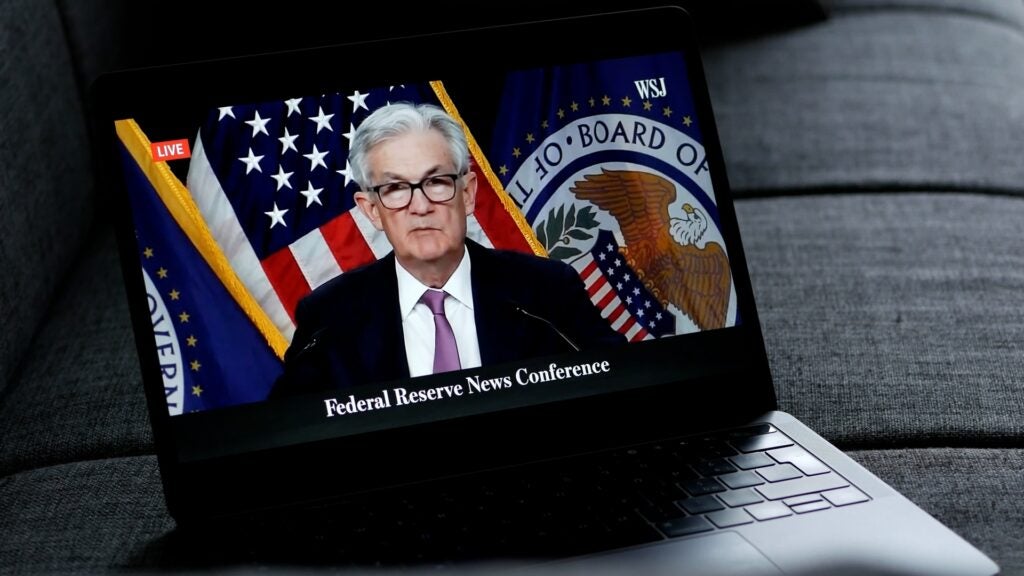
The two-day Federal Open Market Committee (FOMC) meeting kicks off Tuesday, and concludes with a federal funds rate decision and Fed Chair Jerome Powell‘s press conference slated on Wednesday.
Economists broadly agree the Fed will keep interest rates unchanged. However, a growing divergence on Wall Street reveals deep uncertainty over how long that pause will last, largely driven by President Donald Trump‘s trade tariffs and their potential inflationary spillovers.
Much of the press conference is expected to focus on Powell’s response to recent pressure from Trump to lower interest rates, which had fueled fresh concerns within the financial community about the Federal Reserve’s independence.
See Also: US Trade Deficit Soars To Record $140B As Imports Rocket Ahead Of Trump’s Tariffs
Markets Fully Price In A May Hold, Yet Cuts Loom Over The Horizon
CME FedWatch Tool data — which tracks interest rate expectations via fed futures pricing – shows a 97% probability that the Fed will keep rates in the 4.25%-4.5% range in May.
Money markets are pricing in 31% odds of a 25-basis-point cut by June and 78% by July.
Overall, speculators assign a 82% chance that the Fed will deploy three rate cuts by year end.
CFTC-regulated prediction platform Kalshi shows similar expectations to Fed futures, with odds favoring three rate cuts in 2025.
Yet, not all Wall Street analysts are on board with this view.
Bank of America rates strategist Mark Cabana indicated that markets have gone too far.
“Market pricing expects 15bps of cuts by the June FOMC & nearly 40bps by July. We think this is overdone.” He added that economic surprise indices remain relatively stable, suggesting the Fed has room to be patient.
Beyond rates, some attention will also be paid to Treasury market conditions.
According to Cabana, Powell may address U.S. Treasury liquidity. “We expect [Powell] to say the Fed is monitoring conditions closely but that overall they appear orderly,” he said, downplaying the likelihood of any immediate Fed intervention.
Aditya Bhave, economist at Bank of America, echoed that view, saying the central bank will keep rates unchanged as officials await “more clarity on the size of tariffs and their impact on both growth and inflation.” He warned that cutting too soon would “convey that the Fed is not committed to its inflation target.”
Oxford Economics economist Ryan Sweet said the Fed will likely stay on hold and avoid offering concrete guidance.
“Powell will stick with the mantra that the Fed needs more information,” he said, projecting no cut until December. Sweet also sees the Fed aggressively easing in 2026 as tariff-induced inflation fades and labor market slack emerges.
Tariffs Cloud Outlook As Fed Balances Inflation And Employment
Trump’s aggressive tariff moves have added a fresh layer of complexity for Powell.
ING economist James Knightley said overt pressure from President Trump and Treasury Secretary Scott Bessent to slash rates is unlikely to sway the Fed.
“Presidential demands for lower interest rates are falling on deaf ears,” he said, noting that stagflation risks remain, but inflation should trend back to target by late 2026.
Knightley’s base case calls for 100 basis points of cuts in the second half of 2025, with the potential for a more aggressive response if economic data deteriorates.
Goldman Sachs economist David Mericle sees a similar dynamic playing out.
He expects Powell to reiterate that the Fed is waiting for clearer evidence before cutting: “Survey data have deteriorated quickly… but hard data have yet to weaken. The Fed will want to see more convincing signs before acting.”
Goldman Sachs is forecasting three consecutive 25bp cuts starting in July, based on the risk that tariffs could significantly dampen economic activity in the months ahead.
ETFdb.com analyst Sumit Roy added that if Chinese-targeted tariffs remain in place, the drag on economic growth will become “unavoidable.” In his view, that could “force the Fed’s hand,” even with inflationary risks still in play.
Now Read:
Image: Shutterstock